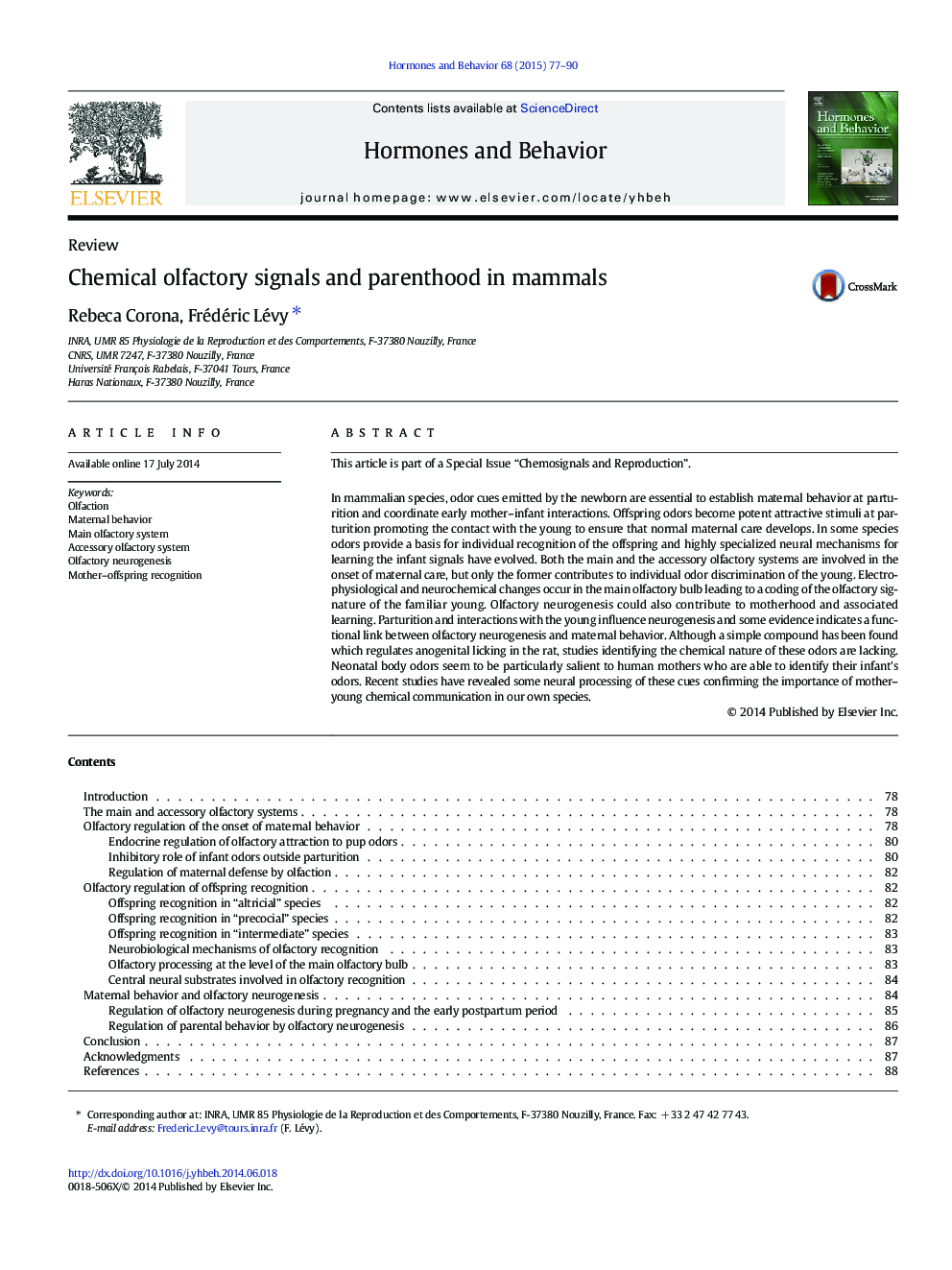| کد مقاله | کد نشریه | سال انتشار | مقاله انگلیسی | نسخه تمام متن |
|---|---|---|---|---|
| 323404 | 540641 | 2015 | 14 صفحه PDF | دانلود رایگان |
• In mammals, offspring odors are attractive at parturition promoting maternal care.
• Odors provide a basis for individual recognition of the offspring in ungulates and humans.
• Both the main and the accessory olfactory systems are involved in promoting maternal care.
• Olfactory neurogenesis could also contribute to motherhood and associated learning.
This article is part of a Special Issue “Chemosignals and Reproduction”.In mammalian species, odor cues emitted by the newborn are essential to establish maternal behavior at parturition and coordinate early mother–infant interactions. Offspring odors become potent attractive stimuli at parturition promoting the contact with the young to ensure that normal maternal care develops. In some species odors provide a basis for individual recognition of the offspring and highly specialized neural mechanisms for learning the infant signals have evolved. Both the main and the accessory olfactory systems are involved in the onset of maternal care, but only the former contributes to individual odor discrimination of the young. Electrophysiological and neurochemical changes occur in the main olfactory bulb leading to a coding of the olfactory signature of the familiar young. Olfactory neurogenesis could also contribute to motherhood and associated learning. Parturition and interactions with the young influence neurogenesis and some evidence indicates a functional link between olfactory neurogenesis and maternal behavior. Although a simple compound has been found which regulates anogenital licking in the rat, studies identifying the chemical nature of these odors are lacking. Neonatal body odors seem to be particularly salient to human mothers who are able to identify their infant's odors. Recent studies have revealed some neural processing of these cues confirming the importance of mother–young chemical communication in our own species.
Journal: Hormones and Behavior - Volume 68, February 2015, Pages 77–90
